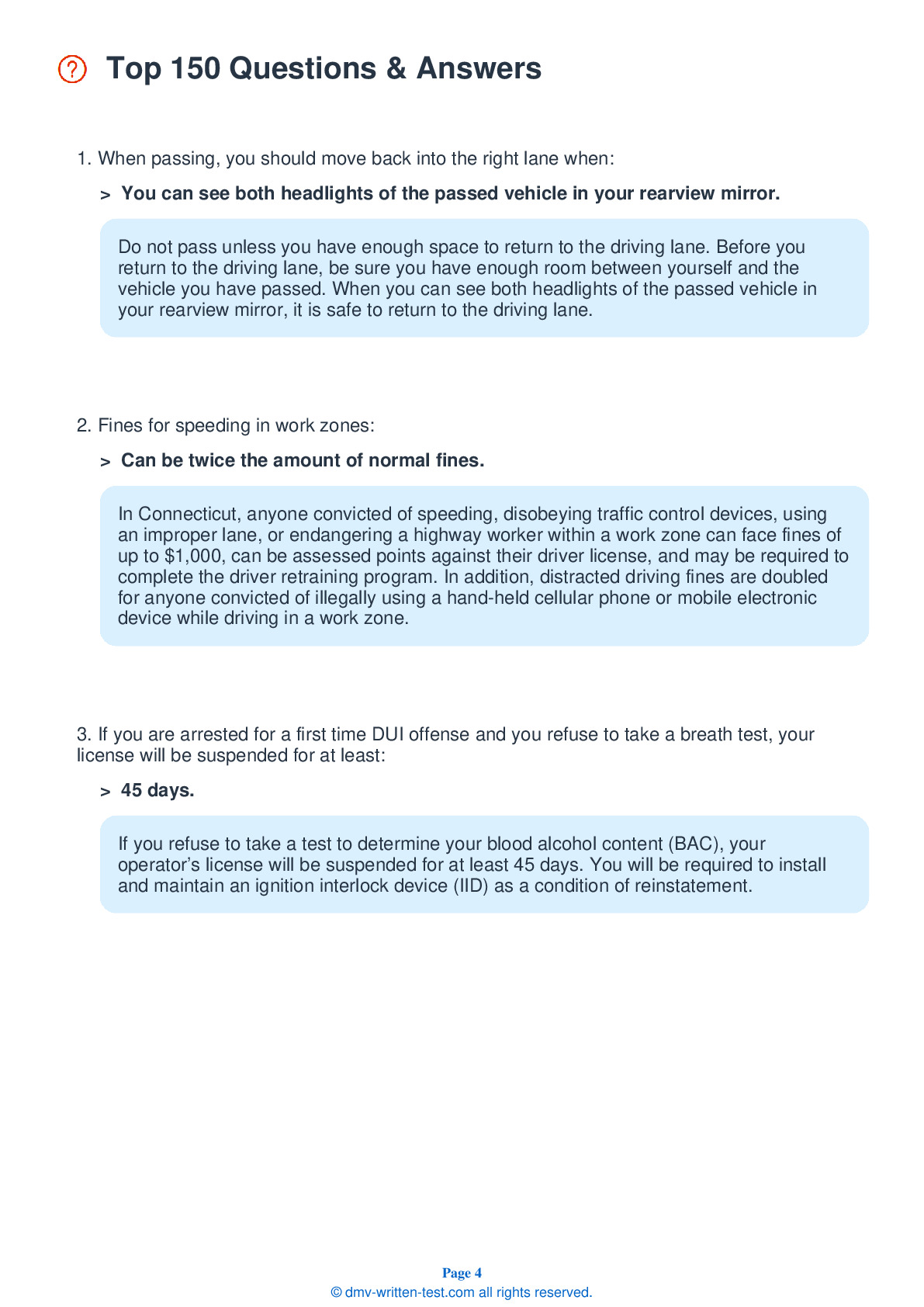2025 Connecticut Permit Test 3
The following questions are from real DMV written tests. These are some of the actual permit questions you will face in Connecticut. Each permit practice test question has three answer choices. Select one answer for each question and select "grade this section." You can find this button at the bottom of the drivers license quiz. For a complete list of questions and answers for Connecticut please visit https://cheat-sheets.dmv-written-test.com/en/connecticut/car.
Number of Tests
Number of Question
Passing Score
1. If your car begins to skid out of control, you should:
Explanation
If your vehicle begins to skid, stay off the brakes. Continue to correct your steering until the vehicle is back under your control and moving safely down the road.
2. This sign means:

Explanation
A triangular red and white sign indicates that you must yield the right-of-way.
3. If you are driving and a tire suddenly goes flat, you should:
Explanation
If a tire blows out or suddenly goes flat while you are driving, grip the steering wheel firmly and keep the vehicle aiming straight. Take your foot off the accelerator and do not brake. Allow the vehicle to slow by itself and use the brakes gently, but only if necessary. Pull off the road when it is safe to do so.
4. Which of these statements is true about drinking alcohol and driving?
Explanation
Being under the influence of alcohol affects your judgment. Good judgement is necessary to react appropriately to things that you see or hear while on the road. Even if you are below the legal blood alcohol limit, consuming any amount of alcohol is likely to affect your ability to drive safely.
5. This sign indicates a:

Explanation
Yellow signs with black markings are used to warn drivers about upcoming hazards or special conditions. Round signs are used only to warn about upcoming railroad crossings.
6. This sign means:

Explanation
Warning signs are usually yellow with black markings. They alert you to conditions that are immediately ahead. This sign warns that you are leaving a separated one-way highway and will soon be driving on a two-way highway.
7. If you are being passed in a no passing zone, you should:
Explanation
Passing areas are based on how far ahead drivers can see. Allow the passing vehicle to re-enter the drive lane as easily as possible to help everyone avoid potential upcoming hazards.
8. Prior to entering a curve:
Explanation




